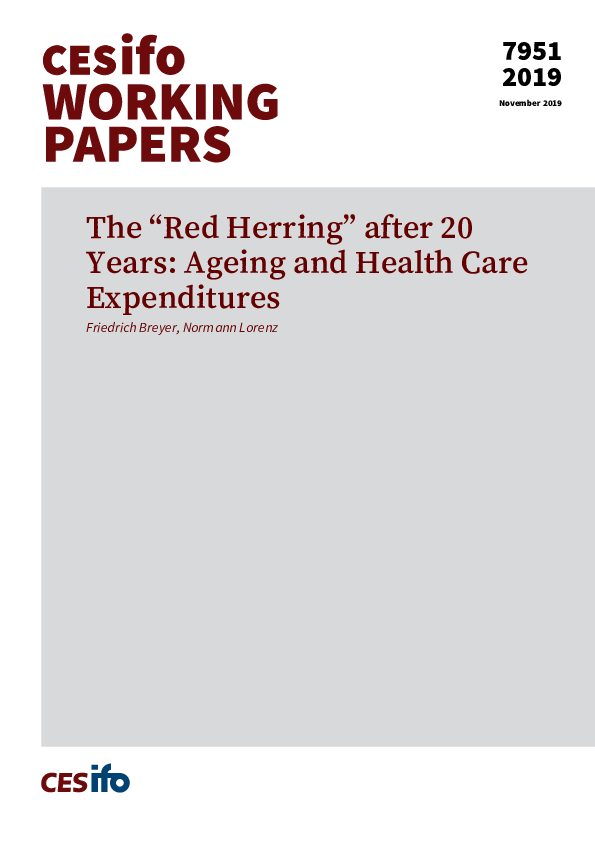The "Red Herring" after 20 Years: Ageing and Health Care Expenditures
CESifo, Munich, 2019
CESifo Working Paper No. 7951

20 years ago, Zweifel, Felder and Meier (1999) established the by now famous “red-herring” hypothesis, according to which population ageing does not lead to an increase in per capita health care expenditures (HCE) because the observed positive correlation between age and health care expenditures (HCE) in cross-sectional data is exclusively due to the facts that mortality rises with age and a large share of HCE is caused by proximity to death. This hypothesis has spurned a large and still growing literature on the causes and consequences of growing HCE in OECD countries, but the results of empirical studies have been rather mixed. In light of the imminent population ageing in many of these countries it is still being discussed whether unfunded social health insurance systems will be sustainable, in particular as long as they promise to provide universal and unlimited access to medical care including the latest advances. In this paper, we present a critical survey of the empirical literature of the past 20 years on this topic and draw some preliminary conclusions regarding the policy question mentioned above. In doing so we distinguish four different versions of the red herring hypothesis and derive the logical connections between them. This will help to understand what empirical findings are suitable to derive predictions on the future sustainability of HCE.
Social Protection